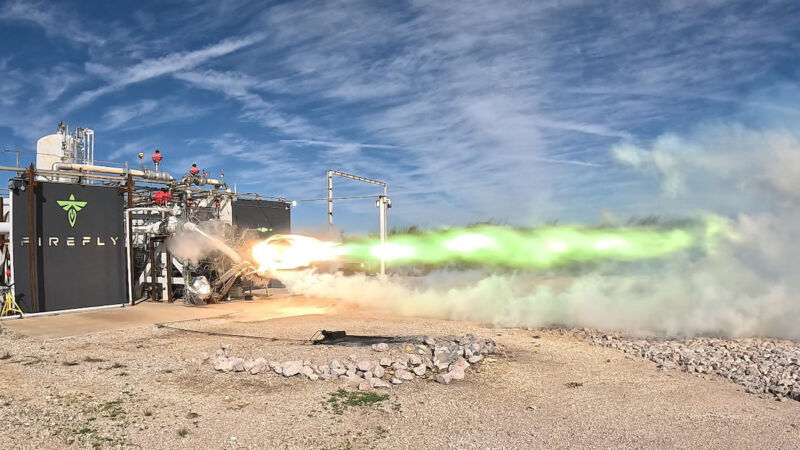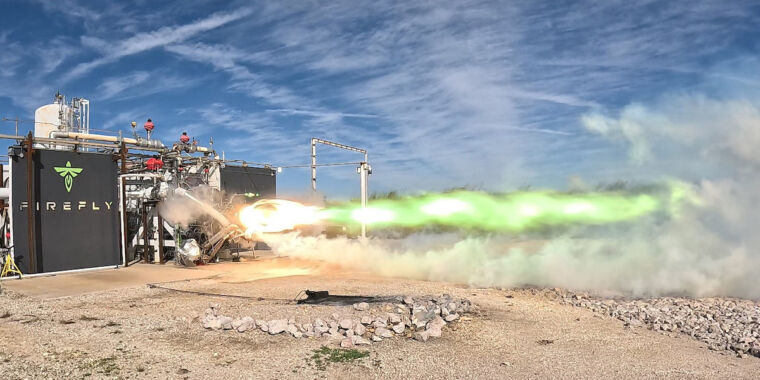
Firefly Aerospace
BRIGGS, Texas – The new medium-lift rocket under development by Firefly Aerospace and Northrop Grumman will eventually incorporate a recoverable booster that will be returned to the launch site in Virginia for reuse.
Firefly has previously suggested rocket reuse is in the roadmap for the new rocket — known, for now, only as the Medium Launch Vehicle (MLV) — but officials revealed new details of the plan during a recent visit by Ars to the factory of Firefly missiles in rural areas. Central Texas.
“Northrop and Firefly have a similar perspective and that is, for that class of missile, reusability is a requirement for a number of reasons,” said Bill Weber, CEO of Firefly. “Economically, it becomes an advantage because we don’t need to go and build additional floor space… Similarly, the pricing structure for customers starts to become super competitive, which we absolutely love and will be right in the middle.”
Firefly is one of several companies racing to roll out new midrange missiles, and all will be at least partially reusable. Rocket Lab, perhaps the most dominant company in the Firefly class, is developing the Neutron rocket while continuing to fly the smaller Electron launcher, which has now amassed 50 missions. Relativity Space, a well-funded private company based in California, is developing the partially reusable Terran R rocket after abandoning its smaller Terran 1 vehicle after just a single test flight. Stoke Space is working on a new rocket design with a reusable booster and an upper stage.
All of these launchers are sized to compete with SpaceX’s Falcon 9 rocket, the current market leader. They will eventually join the US military’s list of launch providers for national security missions, which currently includes only SpaceX, United Launch Alliance and, most recently, Blue Origin.
Necessary to compete
So far, Firefly has provided few details of its rocket reuse roadmap. But details leaked to Ars indicate that MLV will use a known recovery method.
“For our basic design, we’re designing around the return to launch thruster landing,” said Merritt d’Elia, propulsion manager for the MLV program. “We’re going to iterate all these things, but we’re basically architecting for reuse. Not just architecture, we’re planning to do it.”
Firefly may decide to include an option for downward landings on sea barges, as SpaceX does with the Falcon 9 and Blue Origin plans to do with the New Glenn rocket. Rocket Lab and Relativity also plan to perform low-range rocket landings. However, d’Elia said this approach is expensive, requires ship maintenance and delays the return of boosters to their launch site for refurbishment.
Testing of the MLV’s booster recovery technology will begin with the rocket’s first flight, according to d’Elia, when the Firefly will fly with control thrusters to demonstrate the first stage’s reentry maneuver to return to the launch site. release after separation from the MLV upper stage.
Weber, Firefly’s chief executive, said the company’s goal is to recover a complete MLV booster and reuse it around the rocket’s sixth flight. “As it stands now, it will be somewhere around Flight 6,” he said. “That’s likely when it works well to get that capability into flight.”
On the ground, Firefly is designing Miranda engines to be able to perform multiple burns in a single flight, a capability it will need for thrust landings. Engineers are testing the MLV’s composite structures to make sure they can withstand multiple launches and landings, including the heat of atmospheric reentry.
“To meet the launch cadence, to go as fast as we need to go, to do it at costs that make sense, and to do it in a way that we don’t do more damage to the planet along the way. I don’t know how you can achieve this without reuse,” Weber said.
